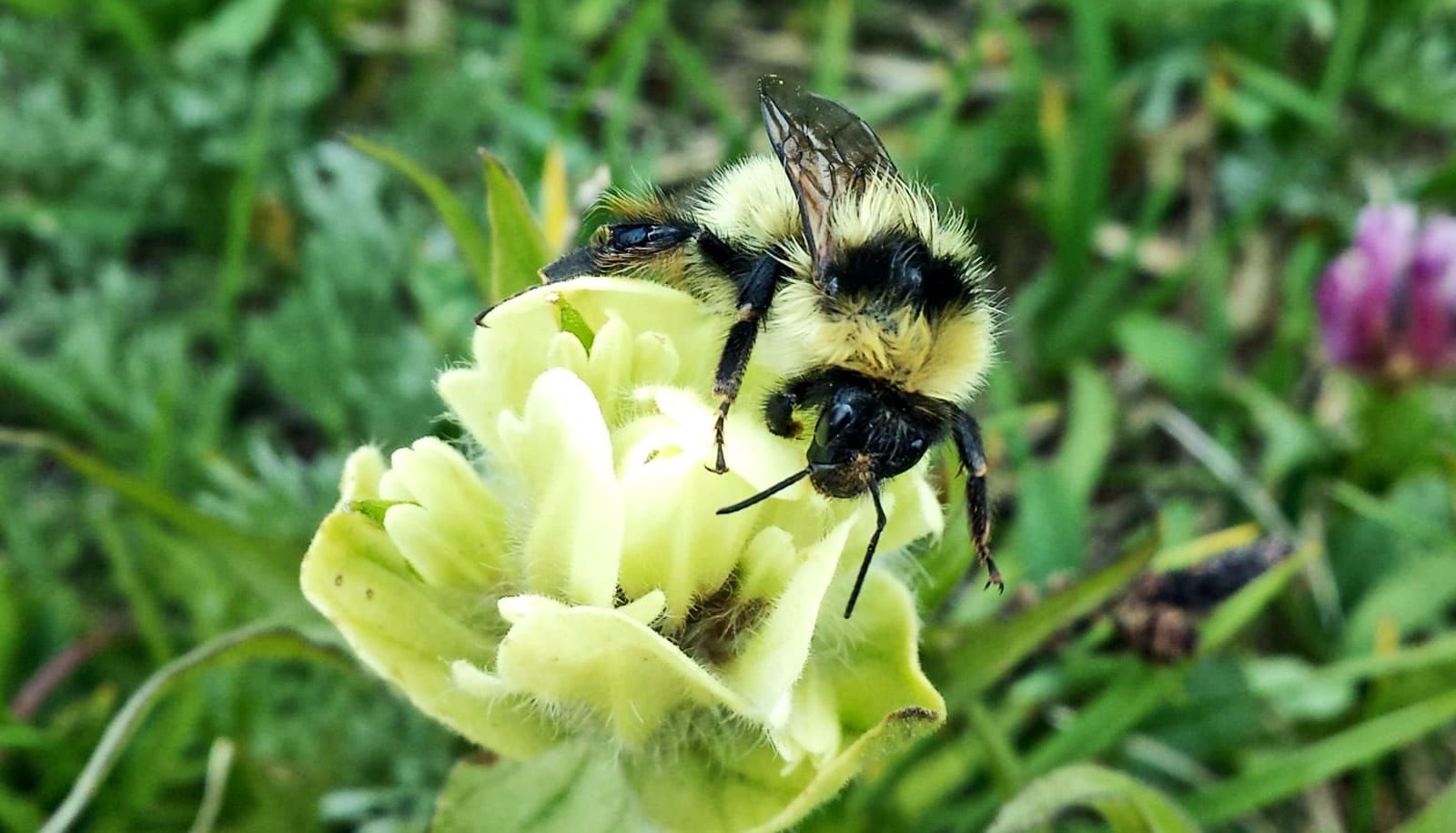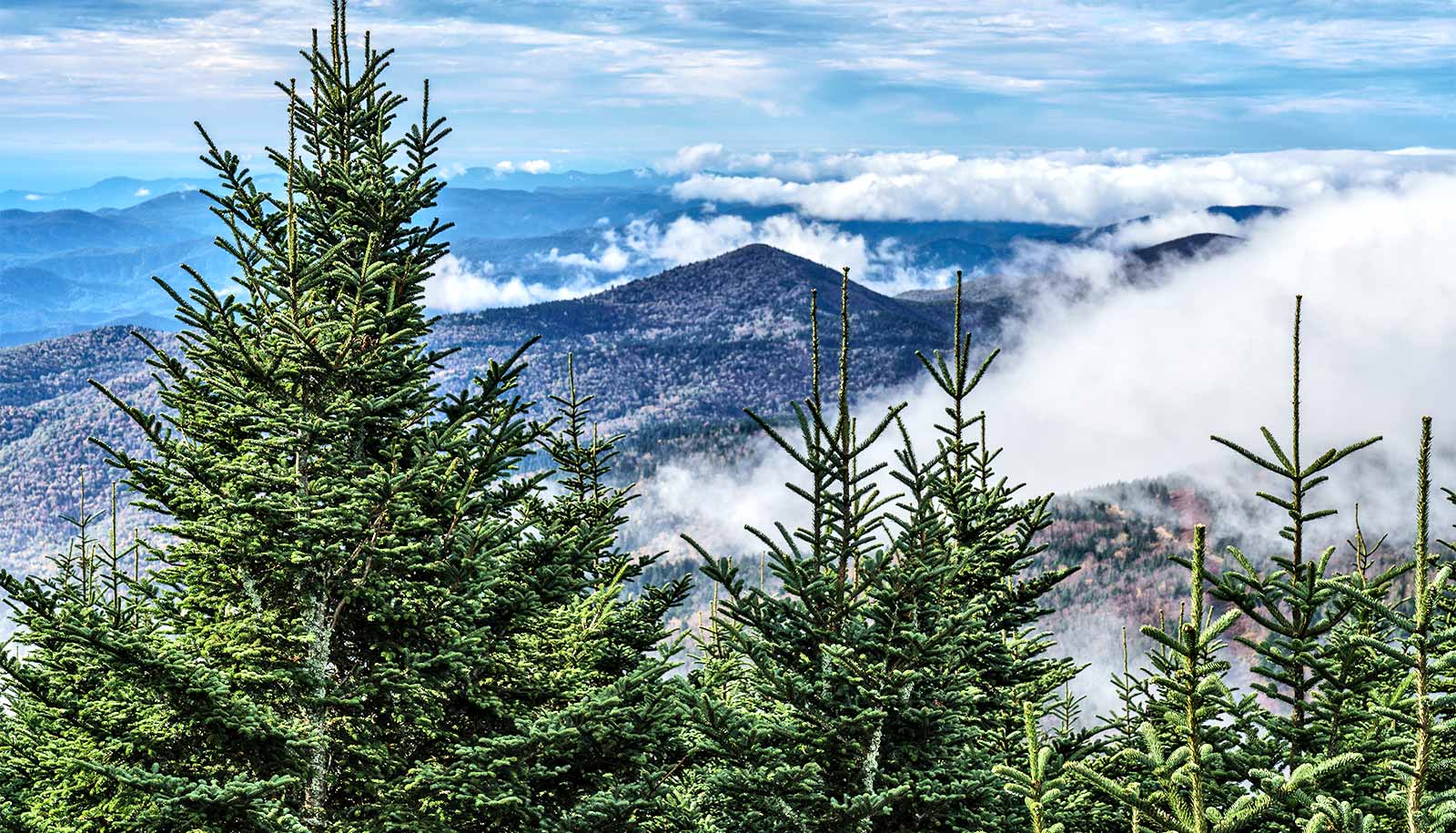Non-native plants are spreading rapidly to higher altitudes along transport routes worldwide, a monitoring study shows.
Many mountain ranges contain semi-natural habitats experiencing little human interference. They are home to many animal and plant species, some of them endemic and highly specialized. Mountains have also been largely spared by invasions of these alien plant species or neophytes.
The new study shows that the pressure of neophytes on mountain ecosystems and their unique vegetation is intensifying worldwide: Invasions of alien plants into higher elevations increased in many of the world’s mountains between 2007 and 2017. The study appears in the journal Nature Ecology & Evolution.
Researchers observed that the number of alien plant species surveyed in each region has increased by a global average of 16% within the past ten years. In addition, in ten out of the eleven mountain regions studied, the scientists found neophytes at significantly higher elevations than ten or even five years ago.
However, first author Evelin Iseli from the Institute of Integrative Biology at ETH Zurich was not surprised that the neophytes are occurring higher up. “We were surprised, however, that their spread is proceeding so rapidly and that the number of alien species has increased so much within a decade,” she says. “Normally, it takes several decades for species to become established and widespread in an area.”
“This trend cannot be attributed to climate change,” she says. Alien plants are usually introduced in the lowlands. From there, they spread to higher elevations until it becomes too cold for them to reproduce. So, the neophytes simply colonize the niches that match their climatic preferences. “The plants manage to do this even without global warming,” Iseli emphasizes.
Climate has indeed warmed in some of the regions during the period of the study, but this was not related to the magnitude of neophyte expansion. “Warming temperatures set the stage for neophytes to spread to even higher elevations in the future because their ecological niche is also shifting upward,” says Iseli.
Humans, whether deliberately or unintentionally, often introduce alien plants in lowlands, then plants spread from their starting point to higher elevations, particularly along roads, which is why the researchers focused on traffic routes. Along roads, neophytes have a particularly easy time because propagules are readily dispersed by people and because the natural vegetation is disturbed; competition with native species that have adapted to the prevailing climate is, therefore, weakened.
In intact mountain habitats further from roads, on the other hand, biological invaders have a tougher time, as Iseli points out. “If the original vegetation is intact, it takes much longer for neophytes to establish themselves and spread.”
The study is based on almost 15,000 observations of 616 non-native plant species from 651 study plots and are collected worldwide using the same procedure. The researchers record the alien species in T-shaped study plots, i.e., a 50-meter-long strip (164 feet) along mountain roads and a perpendicular strip of 100 meters (324 feet). The study areas are distributed at regular intervals along multiple mountain roads in each region.
The vegetation surveys took place in southern and central Chile, two regions of Australia, Tenerife, Switzerland, two regions of the western United States, Hawaii, Kashmir, and Norway.
The first time such data were collected was in 2007 in six of the regions, and 2012 in the rest of the regions. Vegetation surveys are repeated every five to ten years. The researchers participate in this project voluntarily, funding the research from their own resources.
The Mountain Invasion Research Network (MIREN), which was founded in 2005, conducts the study. Its goal is to scientifically study “redistributions” of both alien and native species in mountain areas and to provide a basis for neophyte management. Jake Alexander, senior scientist in the Plant Ecology group at ETH Zurich, was co-chair of MIREN from 2015 to 2019.
“The current study makes it clear that we need to expand biodiversity monitoring programs worldwide and take action to avert any negative consequences for mountain ecosystems and their flora and fauna,” Alexander emphasizes. “The time to act is now because we can literally see our mountain environments changing.”
Source: ETH Zurich



